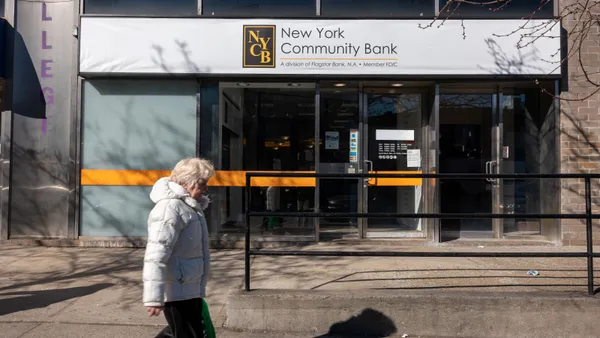Dive Brief:
- About half of Deutsche Bank's 4,600 New York-based employees could "conceivably" move to "smaller hubs and pockets" in the next five years, the bank's top executive in the Americas, Christiana Riley, told the Financial Times on Sunday.
- "I'm optimistic that New York remains, to a degree, a hub," Riley told the publication. "You will continue to have significant amounts of institutional capital sitting in and around New York that will make it meaningful for there to be a centralized presence in New York ... but that isn't maybe going to be relevant for all of those people."
- The German lender already bases about 2,000 employees — specializing in human resources, compliance and risk — in Jacksonville, Florida, and another 600 tech-centric workers in North Carolina's Research Triangle.
Dive Insight:
The prospect of moving teams to lower-cost areas isn't new. Goldman Sachs, for example, has based staff in Salt Lake City since 2000. Dallas, too. And last week, it reportedly was considering moving its asset-management arm to South Florida. Executives have been scouting office locations, chatting with local officials and eyeing tax advantages, sources told Bloomberg.
"We are executing on the strategy of locating more jobs in high-value locations throughout the U.S., but we have no specific plans to announce at this time," a spokesman for the bank told the wire service in an emailed statement.
Cost savings have been a particular focus for Deutsche. The bank began an effort last year to cut its costs by one-quarter by 2022, including eliminating 18,000 jobs. To that end, it said last week it expects to lower its 2022 adjusted costs by $363 million more than previously announced, due in part to pandemic-induced work habits, Bloomberg reported.
The bank in September announced a remote-work approach that is more lenient than most. It said New York City area-based employees wouldn't be expected to return to the office until July 2021, when Deutsche plans to open a new building in Columbus Circle that has workspaces for 4,200 employees but can accommodate 4,600 when accounting for flexible work arrangements.
The Columbus Circle locale represents a cost savings in comparison with the bank's current headquarters on Wall Street. Beyond that, the success of the remote-work experiment has abated "bitter fights" within the bank over whether jobs could be offloaded to lower-cost hubs, Riley said.
"[The pandemic] has taught us a ton," she told the Financial Times. However, she said she expected banks to opt to operate out of a set of lower-cost hubs rather than adopt the "work-from-anywhere" model some tech firms espouse.













